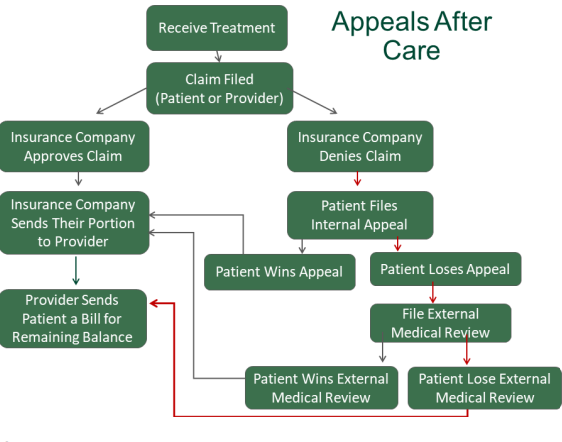Mental health is an essential component of overall well-being, yet it has often been overlooked in discussions about health insurance coverage. As awareness of mental health issues grows, understanding how health insurance can support mental health care becomes increasingly important. This article explores the coverage options available for mental health services, the challenges individuals face in accessing care, and the steps that can be taken to improve mental health coverage.
Understanding Mental Health Coverage
Health insurance plans are required to provide coverage for mental health services under the Mental Health Parity and Addiction Equity Act (MHPAEA). This federal law mandates that and substance use disorder benefits be no more restrictive than medical and surgical benefits. However, the extent of coverage can vary significantly between plans, making it essential for individuals to understand their options.
Types of Coverage Options Mental Health
- Inpatient Treatment: Many insurance plans cover inpatient treatment for severe mental health conditions, such as major depressive disorder or bipolar disorder. This may include hospitalization in a psychiatric facility or a residential treatment center.
- Outpatient Services: Outpatient services, including therapy and counseling, are typically covered by health insurance. Coverage may include individual therapy, group therapy, and family therapy sessions.
- Medication Management: Health insurance often covers psychiatric medications prescribed by a licensed provider. However, the extent of coverage can vary, and individuals may face higher copayments for certain medications.
- Telehealth Services: With the rise of telemedicine, many insurance plans now offer coverage for virtual mental health services. This can be particularly beneficial for individuals who may have difficulty accessing in-person care due to geographical or mobility constraints.
- Preventive Services: Some insurance plans cover preventive mental health services, such as screenings for depression and anxiety. Early intervention can lead to better outcomes and reduce the need for more intensive treatment later on.
Challenges in Accessing Mental Health Coverage
Despite the legal requirements for mental health coverage, individuals often face significant challenges when seeking care. Here are some of the most common obstacles:
1. Limited Provider Networks Mental Health:
May insurance plans have limited networks of providers. This can make it difficult for individuals to find a qualified therapist or psychiatrist who accepts their insurance. In some cases, individuals may have to travel long distances to access in-network providers, which can be a barrier to care.
2. Stigma and Discrimination
Stigma surrounding issues can deter individuals from seeking help. Many people fear judgment or discrimination when discussing their needs, which can prevent them from utilizing their insurance benefits. Additionally, some individuals may feel that their concerns are not taken seriously by healthcare providers.
3. High Out-of-Pocket Costs
While services are covered by insurance, individuals may still face high out-of-pocket costs. High deductibles, copayments, and coinsurance can make care unaffordable for many. This financial burden can lead individuals to forgo necessary treatment, exacerbating their conditions.
4. Complexity of Insurance Plans Mental Health:
Navigating insurance can be complicated, especially when it comes to understanding benefits. Individuals may struggle to find clear information about what services are covered, the costs associated with those services, and the process for obtaining care. This complexity can lead to confusion and frustration, discouraging individuals from seeking help.
5. Lack of Comprehensive Coverage
Not all insurance plans provide comprehensive coverage for services. Some plans may impose limitations on the number of therapy sessions covered or exclude certain types of treatment altogether. This lack of comprehensive coverage can leave individuals without the support they need.
Steps to Improve Mental Health Coverage
To address the challenges associated with coverage, several steps can be taken:
1. Advocacy for Policy Change
Advocating for stronger parity laws and policies can help ensure that services are treated equally to physical services. This includes pushing for legislation that mandates comprehensive coverage and limits on out-of-pocket costs for care.
2. Increased Awareness and Education
Raising awareness about issues and the importance of seeking care can help reduce stigma. Educational campaigns can inform individuals about their rights to coverage and encourage them to utilize their insurance benefits.
3. Improving Provider Networks Mental Health:
Insurance companies can work to expand their networks of providers, making it easier for individuals to access care. This may involve recruiting more professionals and offering incentives for providers to join insurance networks.
4. Simplifying Insurance Information
Insurance companies should strive to provide clear and accessible information about benefits. This includes creating user-friendly resources that outline coverage options, costs, and the process for obtaining care.
5. Utilizing Telehealth Services
Encouraging the use of telehealth services can help individuals access care more easily. Telehealth can reduce barriers to care, particularly for those living in rural areas or those with mobility challenges.
Conclu
insurance plays a critical role in providing access to services, yet significant challenges remain. By understanding coverage options and advocating for improvements in care, individuals can better navigate the complexities of insurance. As society continues to recognize the importance of , it is essential to ensure that insurance coverage reflects this understanding, providing comprehensive and accessible care for all.
